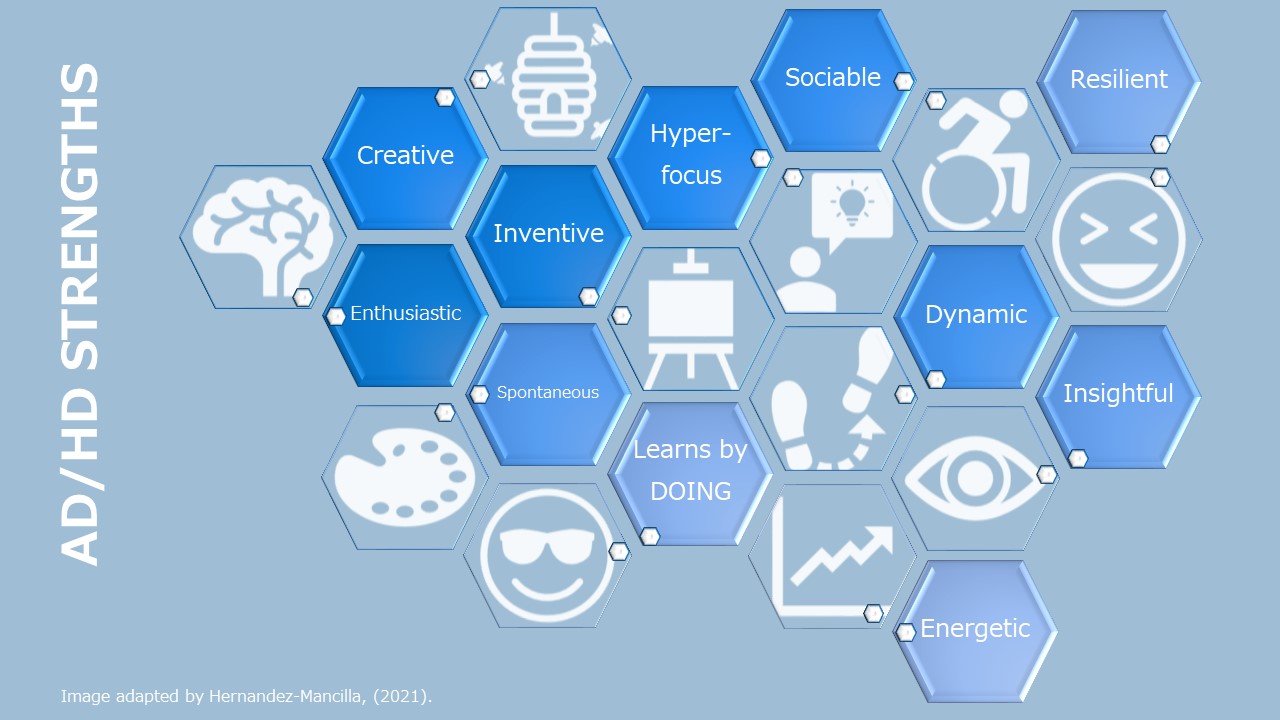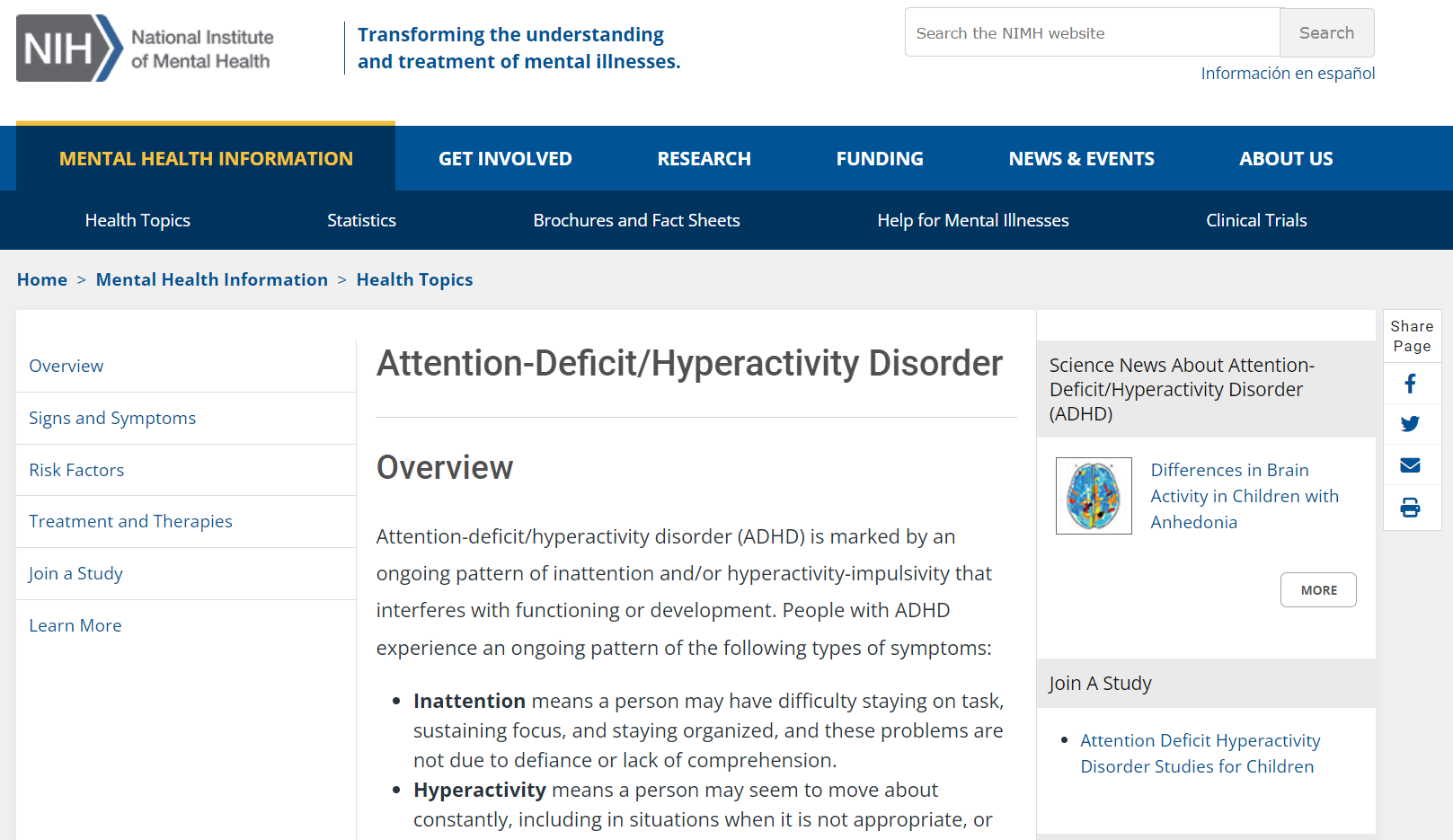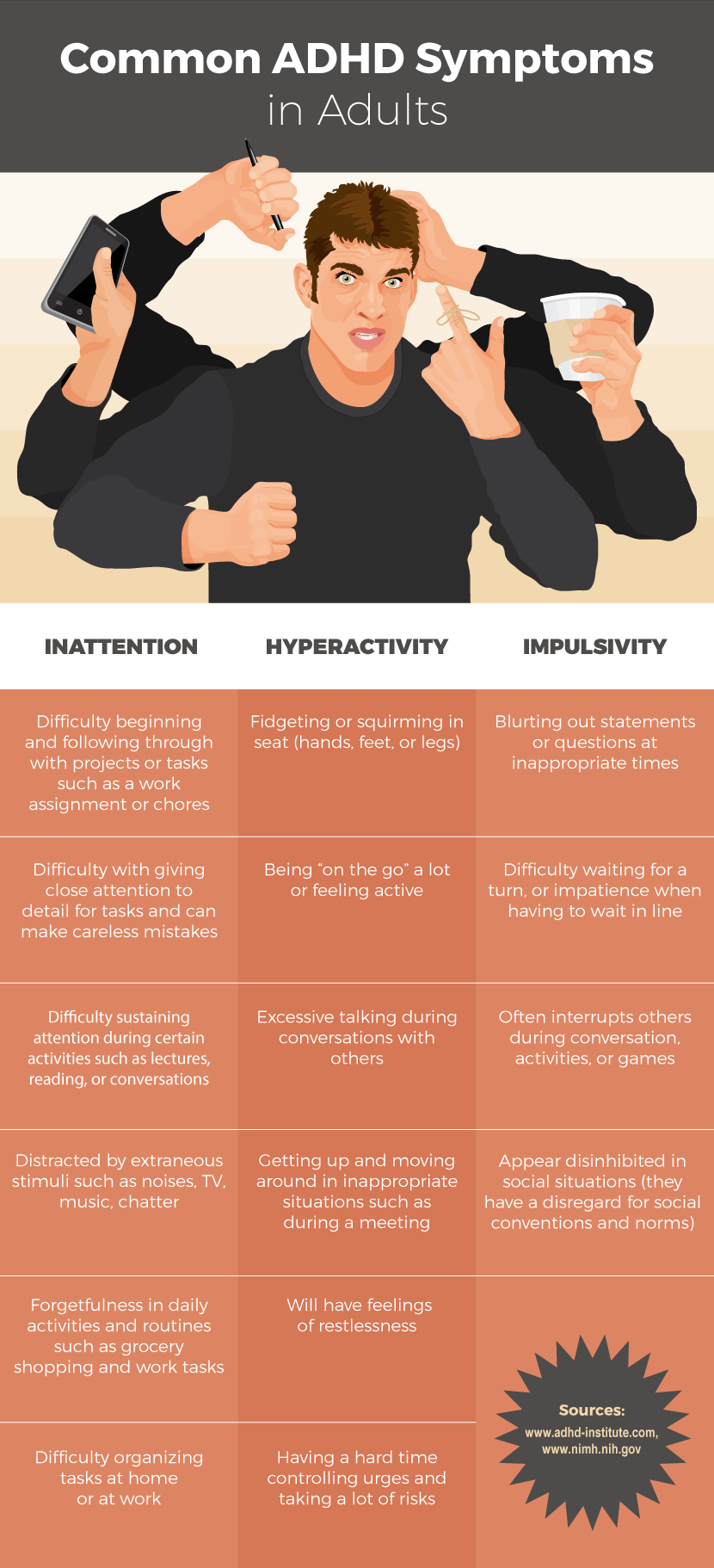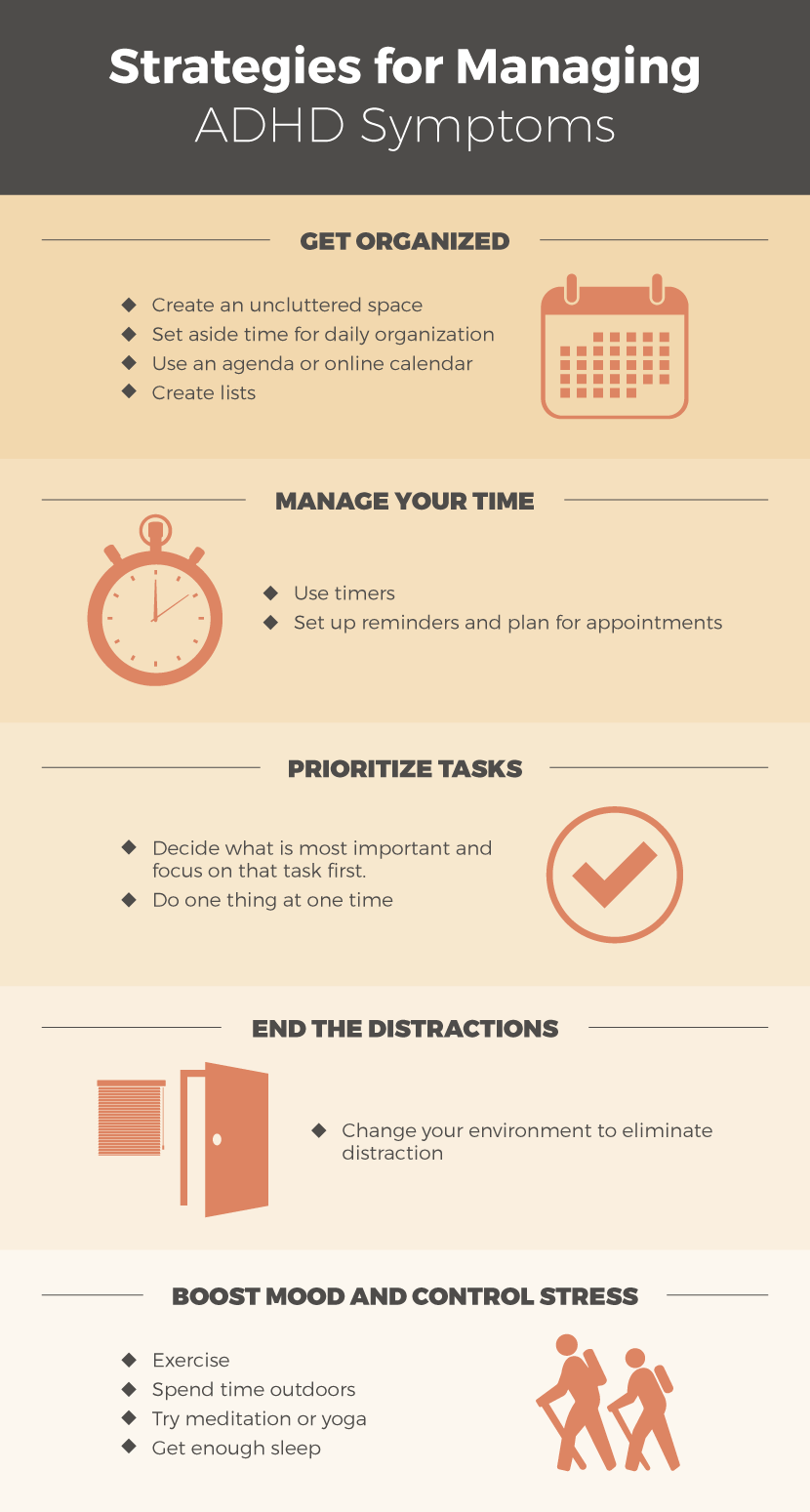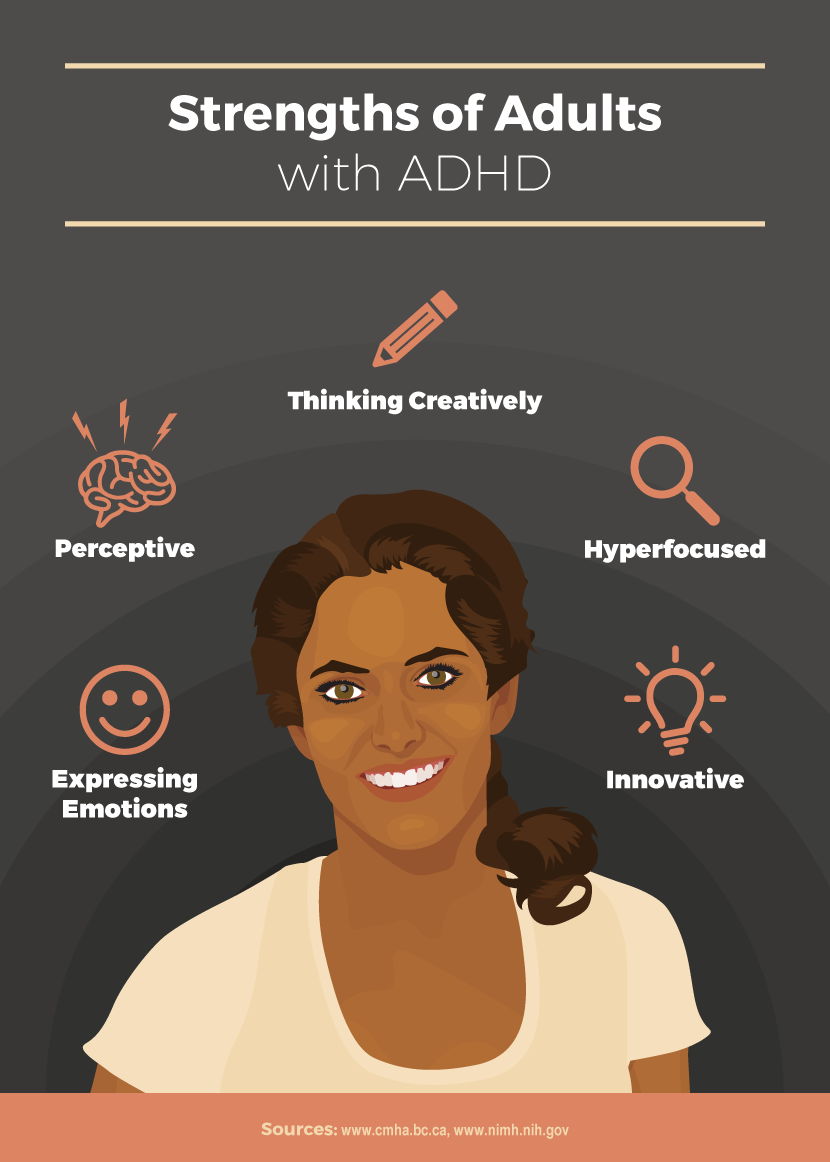AD/HD

Image by Hernandez-Mancilla 2020.
Attention Deficit Hyperactivity Disorder (AD/HD) is a neurodevelopmental condition that is characterised by persistent pattern of inattention and/or hyperactivity-impulsivity that interferes with development and every-day functioning.
- Difficulties sustaining attention, organising, and retaining information. This may include memory problems, difficulties following instructions, managing sequential tasks (planning), and getting easily distracted whilst performing every-day tasks.
- Hyperactivity and impulsivity. This includes constant fidgeting and tapping hands or feet and an inability to remain seated for periods of time when peers the same age are able. Additionally, children are often described as ‘on the go’ acting as if ‘driven by a motor’ and running and climbing during inappropriate situations. During interactions, there may be excessive talk, blurting out answers, interrupting and intruding on others or taking over what others are doing. Other difficulties may include using other people’s things without asking and waiting turn.
For both conditions (ASC and ADHD), these characteristics need to be present across multiple settings and in the early developmental period. However, some of these characteristics may become more evident when specific life-demands commence. For example, when starting nursery or primary school, when social and performance demands increase.
Autism often presents with comorbid neurodevelopmental conditions such as Attention Deficit/Hyperactivity Disorder (AD/HD), found in approximately
- 40%-70% of the autistic population and
- 0.6%-7.4% of the neurotypical population
- Male/female ratio 6:1
